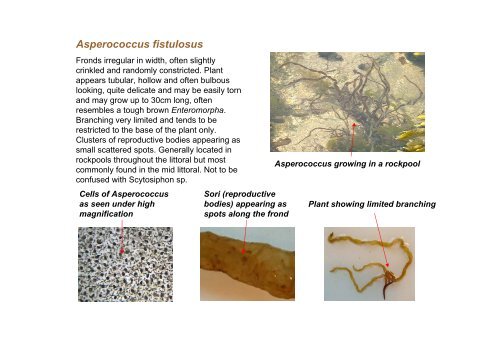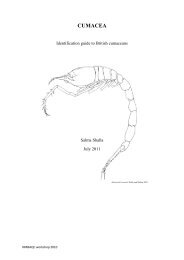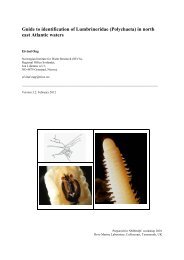s A Field Guide to the British Seaweeds - NMBAQC
s A Field Guide to the British Seaweeds - NMBAQC
s A Field Guide to the British Seaweeds - NMBAQC
Create successful ePaper yourself
Turn your PDF publications into a flip-book with our unique Google optimized e-Paper software.
Asperococcus fistulosus<br />
Fronds irregular in width, often slightly<br />
crinkled and randomly constricted. Plant<br />
appears tubular, hollow and often bulbous<br />
looking, quite delicate and may be easily <strong>to</strong>rn<br />
and may grow up <strong>to</strong> 30cm long, often<br />
resembles a <strong>to</strong>ugh brown Enteromorpha.<br />
Branching very limited and tends <strong>to</strong> be<br />
restricted <strong>to</strong> <strong>the</strong> base of <strong>the</strong> plant only.<br />
Clusters of reproductive bodies appearing as<br />
small scattered spots. Generally located in<br />
rockpools throughout <strong>the</strong> lit<strong>to</strong>ral but most<br />
commonly found in <strong>the</strong> mid lit<strong>to</strong>ral. Not <strong>to</strong> be<br />
confused with Scy<strong>to</strong>siphon sp.<br />
Cells of Asperococcus<br />
as seen under high<br />
magnification<br />
Sori (reproductive<br />
bodies) appearing as<br />
spots along <strong>the</strong> frond<br />
Asperococcus growing in a rockpool<br />
Plant showing limited branching




